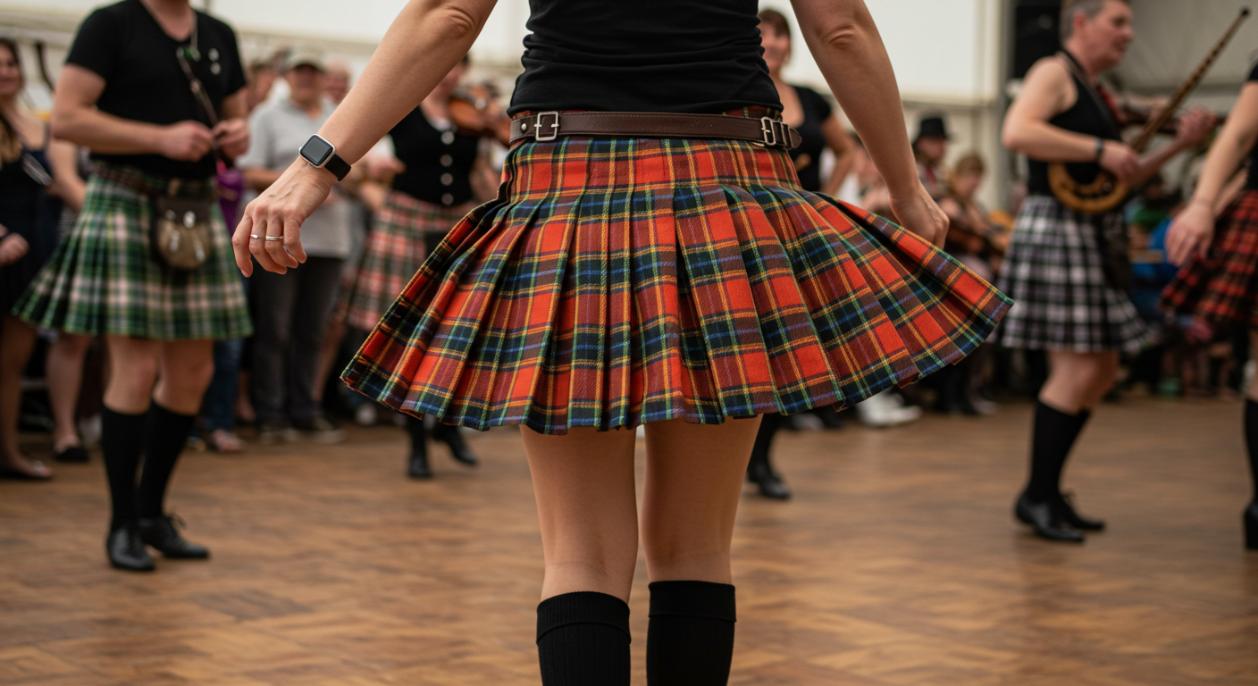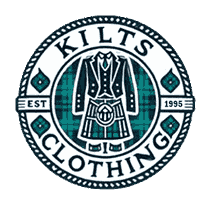The Role of the Irish Kilt in Modern Feminism and Empowerment for Women

Once primarily seen as a male garment tied to Scottish and Irish heritage, the Irish kilt has taken on new meaning in recent years, particularly within modern feminism. Women worldwide have begun to reclaim the kilt, not just as a piece of traditional attire but as a symbol of empowerment, defiance, and cultural pride. In today's society, where the conversation around gender roles and identity continues to evolve, the kilt is a powerful tool for women to challenge norms and celebrate their individuality.
This blog explores the role of the Irish kilts for women in modern feminism and its place in empowering women to control how they express themselves, their heritage, and their personal beliefs.
1. The Historical Significance of the Irish Kilt
To understand how the Irish kilt has become a symbol of empowerment, it's essential to first look at its history. Originating as a male garment in Ireland and Scotland, the kilt symbolizes masculinity and tradition for centuries. The traditional Irish kilt, made of wool or tartan fabric, became associated with the highland clans and their cultural identity.
For many years, kilts were worn exclusively by men, particularly as part of ceremonial and formal attire. Women, who typically wore dresses or other traditional clothing, had little place in this piece of cultural history. However, this began to change as gender norms started to shift. Women, particularly in the feminist movements of the late 20th and early 21st centuries, began to embrace clothing once reserved for men as a way of challenging societal expectations. This shift allowed for the kilt to move beyond its traditional use as a male garment and become a powerful symbol of female strength and identity.
2. The Rise of the Women's Irish Kilt
Women's adoption of the Irish kilts for ladies was not immediate. Still, it was a gradual process tied to the broader societal changes regarding gender roles. Over time, women began to see the kilt as more than just a piece of clothing—it became a statement of defiance against restrictive gender norms. The kilt was, and still is, a garment that allows women to embrace their Irish heritage while simultaneously pushing boundaries and expressing independence.
The emergence of women wearing kilts for various occasions—ranging from festivals to formal events—signaled a shift in fashion and culture. Kilts became more than just traditional dress; they were a way for women to assert their place in a historically male-dominated space. Over the past few decades, designers have redefined this garment to suit modern women's needs, combining elements of traditional tartan patterns with more contemporary fabrics and cuts.
3. The Kilt as a Symbol of Feminism and Empowerment
One of the most significant ways the Irish kilt has become a symbol of modern feminism is through its challenge to traditional gender expectations. Wearing a traditionally male garment signals a rejection of outdated norms that dictate what women should wear and how they should present themselves. This act of subversion in fashion aligns closely with feminist principles—especially equality and the freedom of choice.
In many ways, women can see the irish kilt for women as a tool to reclaim ownership over their bodies and their identity. For decades, society has told women that femininity is synonymous with softness and delicacy. Often made from thicker, more structured fabrics, Kilts are the antithesis of that stereotype. They represent strength, resilience, and the power of choice.
Furthermore, the kilt offers a certain freedom that other garments don't. Unlike dresses, which often feel restrictive or uncomfortable, the kilt allows for greater mobility and comfort while maintaining a sense of formality and style. This functionality aligns with the feminist concept of women needing to be physically, mentally, and culturally free from societal constraints.
4. Kilts in Popular Feminist Movements
Feminist movements cannot overstate the influence of the Irish kilt. Women have often used clothing as a form of protest, and they use the kilt similarly. Women have consistently used the kilt to express their beliefs and challenge inequality, from wearing it during marches to incorporating it into their wardrobes as a statement piece.
In feminist marches and protests, clothing can become a language, telling the world what the wearer stands for without needing words. The kilt, with its deep cultural roots, provides an added layer of meaning, symbolizing not only gender equality but also national pride. Women in Ireland and beyond have worn the kilt as part of their activism, whether in cultural celebrations or as a visual statement against gender-based oppression.
Moreover, the Irish kilt has seen a resurgence in feminist fashion circles, often seen as a rebellious yet respectful nod to history. Designers and activists alike have embraced the kilt in their work, using it to challenge traditional notions of femininity, class, and nationality. Its strong connection to Irish nationalism further adds to its significance, as it embodies both cultural pride and feminist ideals.
5. Gender Fluidity and the Modern Irish Kilt
Another key aspect of the kilt's role in modern feminism is its embrace of gender fluidity. While men traditionally wore kilts, people now see them as versatile garments that transcend gender boundaries. In a world where gender identity is fluid, the kilt's unisex design makes it an ideal piece for those who wish to express themselves outside of traditional gender norms.
Today, women, men, and non-binary individuals wear kilts, making it a symbol of inclusivity. The kilt has become a piece of clothing that anyone can wear, regardless of gender identity. Its ability to adapt to modern definitions of gender and expression is one of the reasons why it has become such a powerful emblem for those advocating for gender equality.
This progressive aspect of the kilt is especially relevant in the current landscape of fashion, where more and more people are rejecting rigid gender stereotypes. In this sense, the Irish kilt is not just a symbol of feminism but also a broader statement about freedom of expression and individuality.
6. The Future of the Irish Kilt in Feminism and Empowerment
As the conversation around gender, culture, and fashion continues to evolve, so will the role of the Irish kilt in modern society. With its rich history and powerful symbolism, the kilt will continue to serve as a reminder of how far women have come in their fight for equality and empowerment.
The kilt will likely remain a key component in discussions about fashion, feminism, and cultural expression. Its ability to transcend gender, break down barriers, and serve as a form of self-expression ensures that it will continue to resonate with women and those advocating for gender equality. Whether worn for a special occasion, as part of a cultural celebration, or as an everyday item, the Irish kilt will remain an enduring symbol of strength, independence, and empowerment for generations to come.
Conclusion
Once a symbol of male-dominated tradition, the Irish kilt has transformed into a powerful emblem of feminism and empowerment for women. By embracing this garment, women are reconnecting with their cultural heritage and making a bold statement about defying gender expectations and embracing their strength and independence. The modern Irish kilt represents a fusion of tradition and progress, serving as a reminder of the ongoing struggle for equality while celebrating the individuality of those who wear it.
As fashion continues to evolve, the Irish kilt stands as a testament to the power of clothing as a tool for social change—empowering women to reclaim their bodies, identities, and heritage while challenging the norms that have long defined them.


